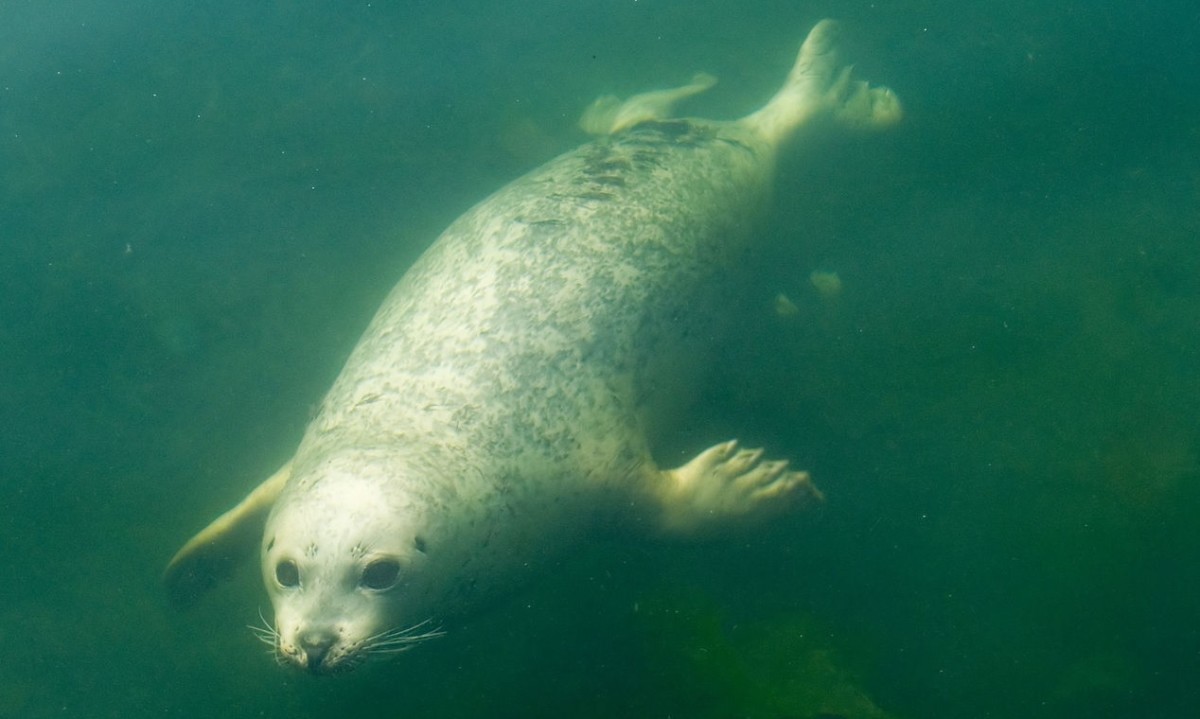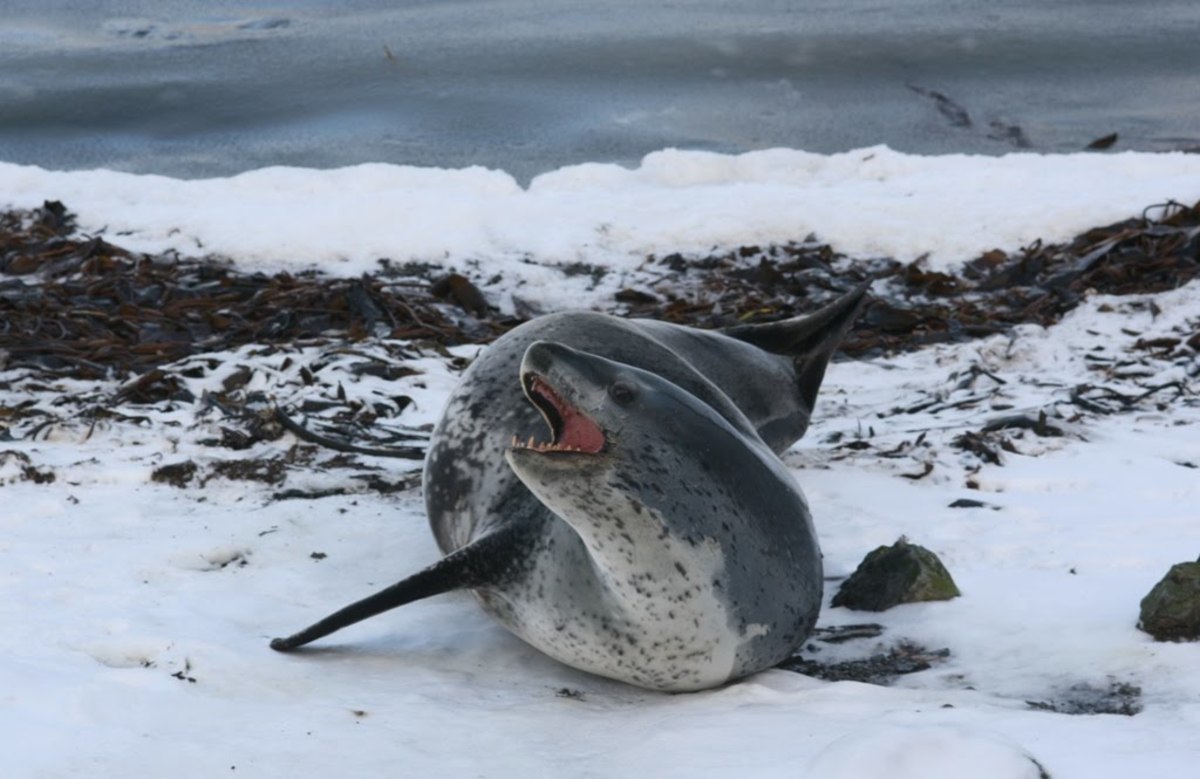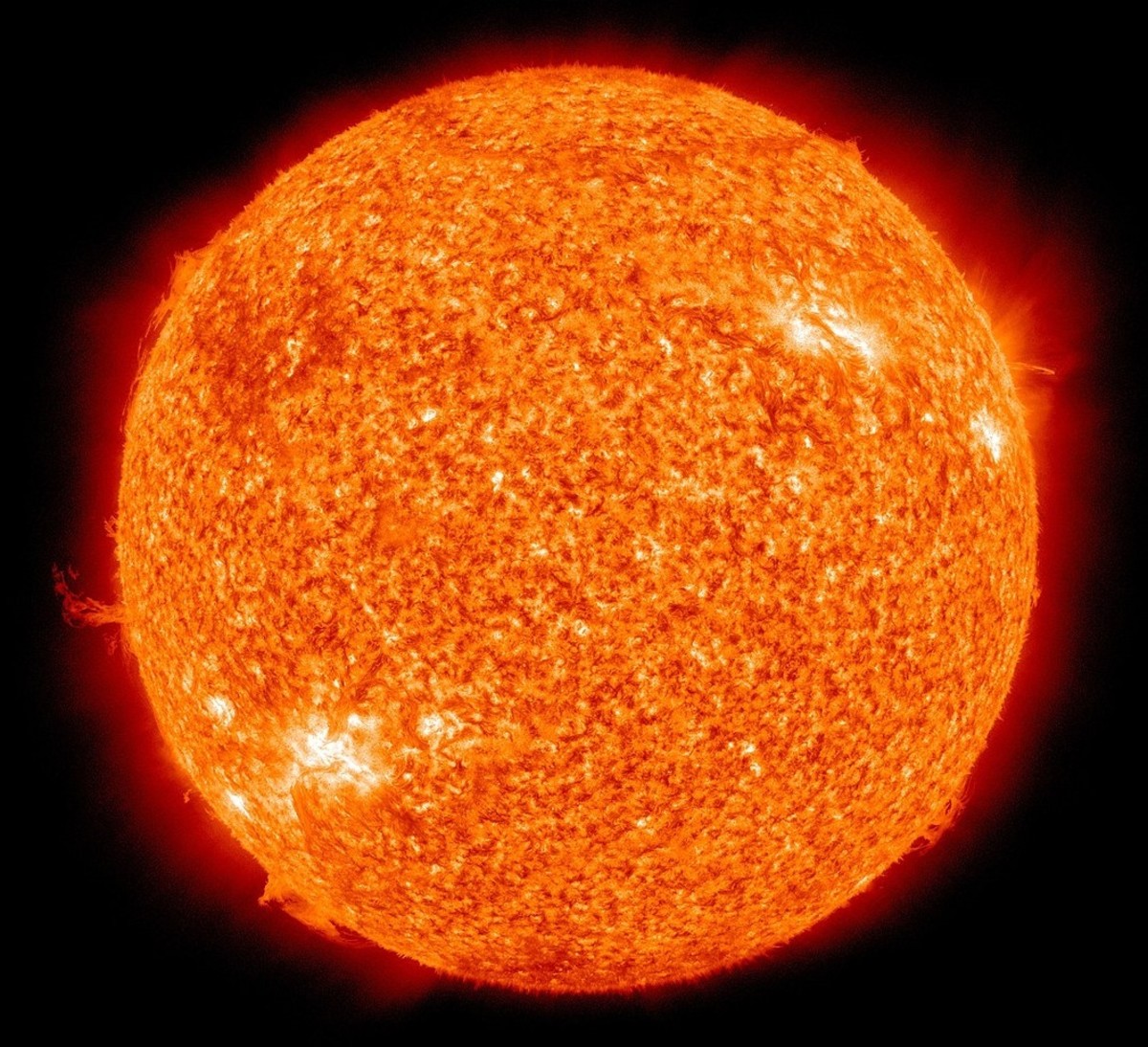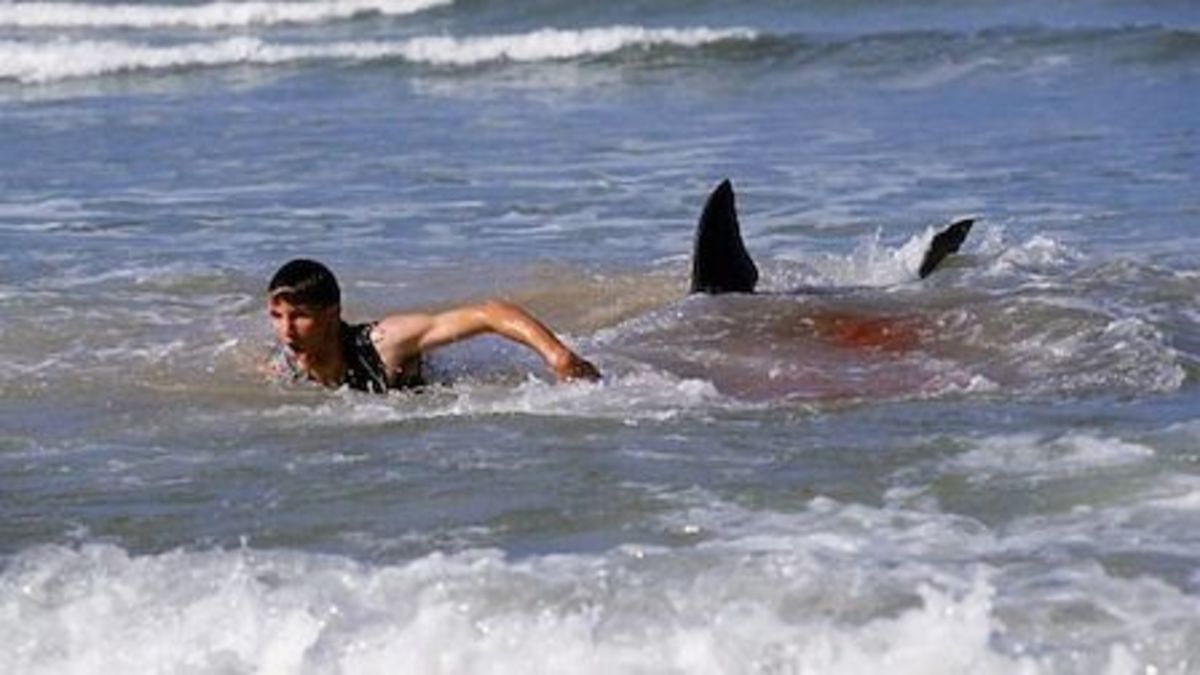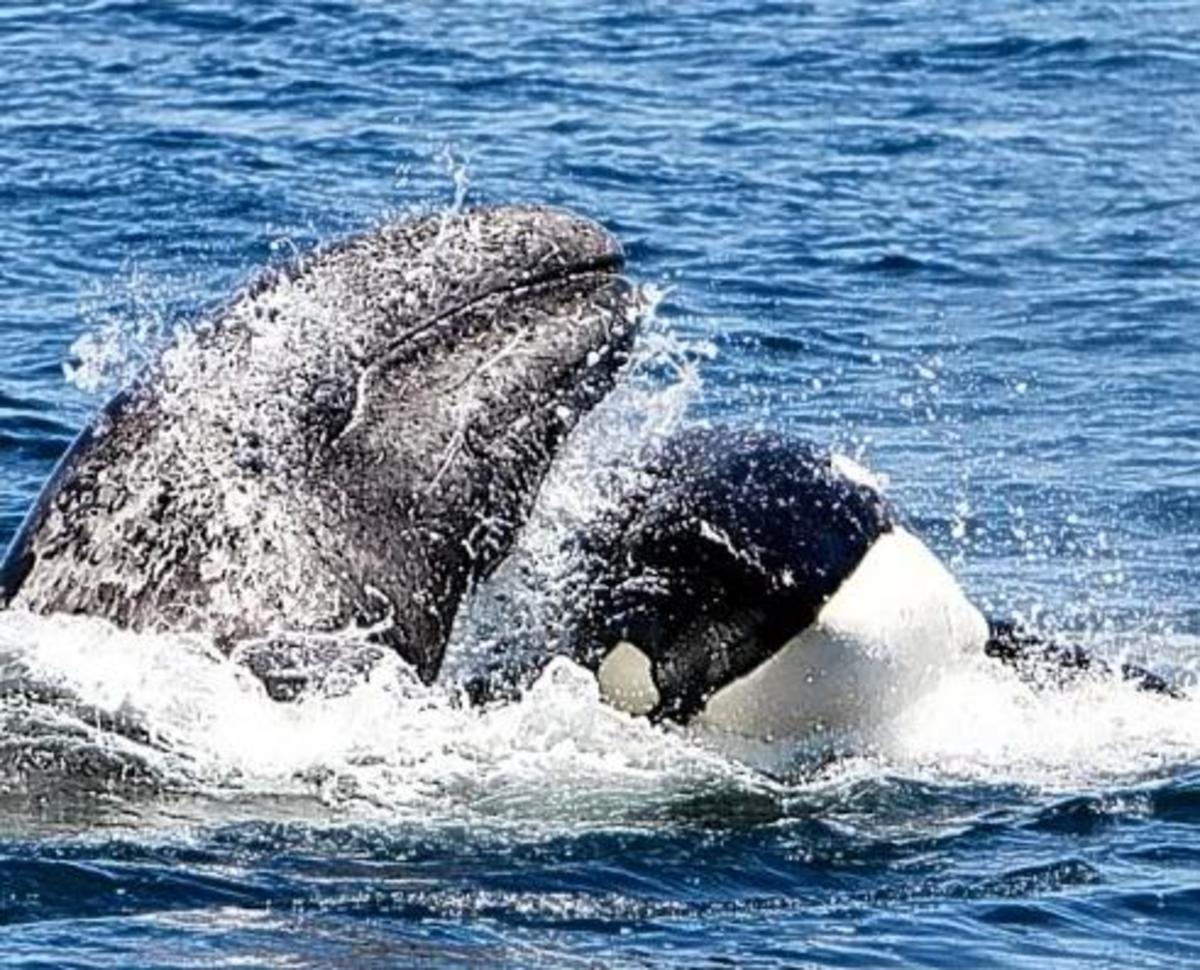- HubPages»
- Education and Science»
- Life Sciences»
- Marine Biology»
- Marine Life
Harp Seal
Scientific Name: Pagophilus groenlandicus

Harp Seal Description
The thick fur on the Harp Seal is definitely what allows it to stand apart from other species out there. The young offspring are all white, which helps them to have the protection they need while they are growing up. As a Harp Seal gets older though other colors will start to emerge including brown and black. The adult males have a long strip of black down their backs too which allows them to be easily distinguished from the females.
There is only one species of Harp Seal out there. Where the confusion comes in is that there are several different locations out there where they live. There are also many breeding areas for them. Still, they are all the same thing and there aren’t separate types of Harp Seals as many people believe. They are fairly large too – with an overall weight of 400 pounds and they can be as tall as 5 ½ feet.
Seal Facts
- Facts about Seals
Facts and Information about Seals. Feeding, habitat, distribution, reproduction, anatomy and more. Facts about Species like the Harbor Seal, Harp Seal, Hawaiian Monk Seal, and many others. - Leopard Seal
The Leopard Seal is the second largest of all species out there. They can be about 11 feet long and weigh as much as 1,300 pounds. The males are larger than the females but both sexes are both very large. These are very aggressive animals in the wate
Harp Seal Anatomy
Many people have commented on the small heads of the Harp Seal. They tend to outgrow them as they get older! They also have whiskers that are long and graceful on the face. These whiskers do allow them to have additional senses when it comes to touching. They can use these senses for finding prey, to avoid danger, and even to attract a mate. Their bodies are designed to be able to move through the water and also powerful enough to pull themselves up on to the thick layers of ice.
Harp Seal Evolution
There isn’t exact information out there that is valid so far to explain the evolution process for the Harp Seal. It is believed that they somehow got separated by moving ice though so they couldn’t move back to warmer areas. This could have led to them developing very thick furry coats. It also led to them developing thicker layers of blubber. There is evidence that seals have been around though in many forms for at least the past 20 million years.
Amazing Animal Facts
- Facts about Whales
Whale Facts and Information. Feeding, habitat, distribution, reproduction, anatomy and more. Facts about Species like the Blue Whale, Humpback Whale, Sperm whale, Beluga Whale and many others. - Facts about Polar Bears
Polar Bear Facts and Information. Feeding, habitat, distribution, reproduction, anatomy and more. Also, the conservation efforts made to preserve Polar Bears and how humans have interacted with Polar Bears.
Harp Seal Behavior
These are extremely social animals and they can be very noisy as well. They will form large colonies that they spend a great deal of time with. It is believed that within that loose structure are smaller groups with their own hierarchy. Sometimes these large groups will have to go their separate ways though in order to survive out there. Many Harp Seals are able to live up to 30 years in the wild.
Harp Seal Habitat
You will find the Harp Seals living where it is extremely cold. They are able to survive in temperatures where most people and animals wouldn’t be able to do so. The combination of their fur and their layers of blubber though allow them to be able to do just fine there. They are able to control their body temperature so that they can do very well in such harsh living conditions. This is amazing to many researchers due to the fact that they have a hard time being out in that environment long enough to document what is going on with them.
You will find them in the waters around Canada, Russia, and Greenland. They are migrants as well when they level of ice becomes too thick for them to be able to move around in the water. They also migrate so that they can mate and to ensure they are able to constantly have enough food. Some of their migration patterns have been documented but there are still several that continue to change based on their habitat and food supplies.
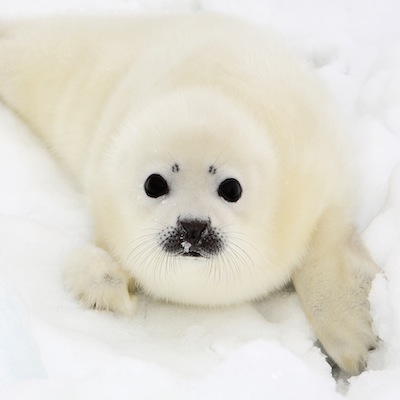
Harp Seal Feeding Habits
The Harp Seal has to consume very large amounts of food each day. In order to so this they have to take what comes along. They can’t pass up a meal in the hopes that they will get their fill of something later on in the day. They mainly consume small fish as well as various types of small crustaceans. They will also consume squid at times when these sources are hard to find.
The Harp Seal is very intelligent as well as a skilled hunter. They have a very wide circumference of area where they hunt. They can move many miles each day in their efforts to be able to find enough food to survive on. Their ability to get plenty of food can depend on the location as well as the time of year. They are instinctively able to remember where they found food and when they should move on to a new location.
Related Sites
- The Portal of Life on Earth - Amazing Animal Facts
Amazing Animal Facts - The Portal of Animal Diversity. Visual index of animals. Dolphins, Whales, Penguins, Sharks, Tigers, Elephants, Flamingos, Otters, Killer Whales, Seals, Sea Lions, Sea Turtles, Polar Bears, Walruses, Squids, Manatees, Snails, G - Walrus Facts
Walrus Facts and Information. Feeding, habitat, distribution, reproduction, anatomy and more. Also, the conservation efforts made to preserve Walruses and how humans have interacted with Walruses. - Sea Lion Information - Sea Lion Facts and Information
Habitat, feeding, reproduction, anatomy, evolution, and more...
Harp Seal Reproduction
Harp Seals are ready to mate at five years of age but the majority of them don’t engage in it until they are about seven years old. The males work very hard to gain the attention of a female. They can be seen on the ice calling and trying to touch the various females. When they do get one that will mate with them they move into the water to do so. The males will continue this process with as many females as they are able to do.
The females will be able to control when the embryo attaches to the uterus. As a result they are able to postpone the actual birth time to suit their needs. The females then are on a quest to consume as much food as they can. They need to store up fat to produce the volume of milk their young will consume for the first couple of weeks of life.
She won’t have the chance to leave her young to go get food. After about two weeks she will never return to the young. She will go get food and move back to her colony in the water. For more than three weeks the young remain on the ice to live off their own fat storage. Then they will move to the shallow areas of the water until they are old enough to swim well.
- Facts about Pollution | Effects of Pollution
Pollution Facts and Information. Effects of Pollution in the Environment
Harp Seal Predators
There are quite a few predators that the young Harp Seals have to be aware of. They include the polar bears and birds. Both can aggressively hunt these animals due to the small size of them. As the Harp Seals get older and swim deeper they have to watch out for the Orcas and the sharks though. As the food supplies for those larger animals become scarce they will consume more of the Harp Seals that they come into contact with.
Harp Seals have long been bothered by humans though. In fact, this has created problems for their overall population enough to be a huge concern. Harp Seals have been killed for their lovely fur as well as a source of food. They have also been killed by hunters that love to go after unique types of kills. For those that make money by capturing fish, they know their nets will be fuller if they don’t have to compete with the Harp Seals.
Today they are considered to be on the verge of extinction. Even with protective orders in place they are still in jeopardy. There simply aren’t enough efforts in place to enforce the laws that prevent the hunting of these animals. Educating the public about turning in poachers and to protect their natural environment though is a great way to be able to do something to protect them.

